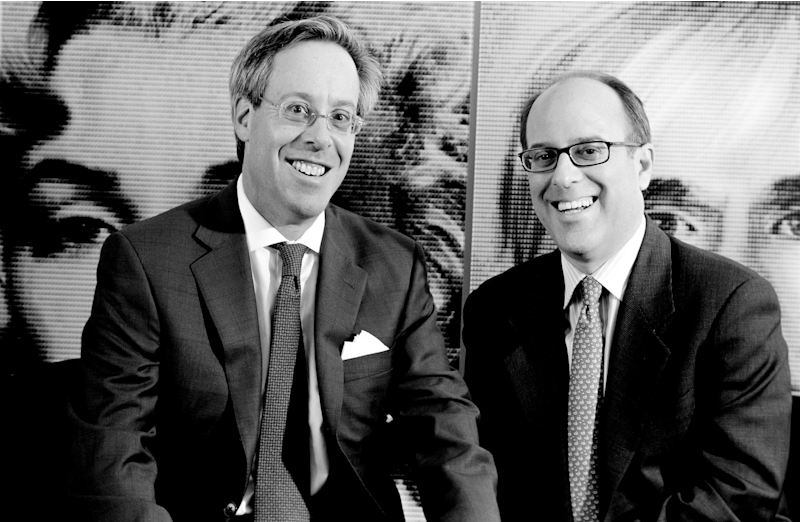Analysis
On the Case: The Real Deal on Authenticity
We need a solution that won't have a chilling effect on the market.

We need a solution that won't have a chilling effect on the market.

Our previous article for artnet News concluded with the observation that it is the market—and not the legal system—that decides whose opinion matters in determining whether an artwork is authentic. By “the market,” we meant, of course, that ever-shifting invisible web of transactions occurring every day among art dealers, auction houses, and others.
In common law countries such as the US and the UK, subtle and sometimes changing factors help people determine what is considered authentic (connoisseurship, scientific inquiry, provenance, etc.) in contrast to the more black-and-white “confiscate (or destroy) the work now, ask questions later” approach used in countries such as Italy, France, and China. Nevertheless, at the end of the day the market also demands a clear determination of whether a work is “right” (and therefore sellable) or not.
For better or worse, US courts have long found themselves weighing in on whether a given work of art is authentic. For instance, in the 1993 federal case Greenberg Gallery, Inc. v. Bauman, the court, relying on the opinion of Linda Silverman, found that the mobile Rio Nero was an authentic piece by Alexander Calder, even though Klaus Perls, the expert whom the market (and Silverman herself) recognized as one of the leading authorities on Calder, declared it a copy. (The court gave greater weight to Silverman because she inspected the work more thoroughly than Perls, who did not inspect the mobile’s “AC” signature.)
The Greenberg court acknowledged that “Perls’ assessment of the mobile’s authenticity would destroy its value in the art market” but noted: “This is not the market, however, but a court of law, in which the trier of fact must make a decision based upon a preponderance of the evidence.” Perhaps not surprisingly the art market apparently didn’t care about the judge’s ruling, and likely as a result of Perls’ estimation the mobile was not sold for years.
The fact that the market determines authenticity was reiterated, coincidentally, in another Calder case, Thome v. Alexander & Louisa Calder Foundation, decided in 2009 by the New York Appellate Court. That court refused to compel the Foundation to authenticate stage sets which Calder had designed but had not lived to see finished. The works’ owner, Joel Thome, needed the Foundation’s authentication in order to sell them. But the court, referring to Greenberg, recognized “the inability of our legal system to provide a definitive determination of authenticity” and observed: “The point is that a declaration of authenticity would not resolve plaintiff’s situation, because his inability to sell the sets is a function of the marketplace.”
Interestingly, in January 2014, Paris’s Cour de Cassation, a French High Court of Appeals, also upheld an expert’s right to decline to authenticate—a decision that may influence some US judges, too. The case involved the owner of a painting by Jean Metzinger who, wanting to sell it, sued to compel its authentication by Bozena Nikiel, an expert on the artist who was writing the catalogue raisonné on Metzinger and who also held the French “moral right” to attribute works to him. The High Court overturned a lower court that had appointed an expert who did not specialize in Metzinger and who found the work worthy of authentication. The lower court had decided that Nikiel had wrongfully refused to authenticate the painting and had ordered her to pay damages to the owner and a €30,000 fine.
Although the market, and not judges, determines authenticity, the fear in the US among authenticators that they will be held legally liable (i.e, sued) for their opinions has nevertheless clearly had a chilling effect on the market. Appraisers, authentication committees, and the writers of catalogues raisonné are increasingly closing shop or refraining from offer opinions, thereby leaving uncertainty as to whether a work is or is not “right,” and creating an entire class of “orphan” works.
In our view, the understandable reluctance of authenticators to do their jobs in the face of potential liability has had the strange consequence of leading to considerably more fakes in the market and increased litigation in the US on the issue of authentication—as can be seen, among other examples, in the cases swirling around the famous Knoedler gallery, which closed in 2011 after 165 years in business in the wake of allegations that it sold forged works by Jackson Pollock, Robert Motherwell, and many others.
So how can buyers in today’s market be reassured that they are not buying fakes? Some have suggested that the market should be more flexible about recognizing various sources to determine authenticity. As the Thome court observed: “If buyers will not buy works without the Foundation’s listing them in its catalogue raisonné, then the problem lies in the art world’s voluntary surrender of that ultimate authority to a single entity.”
But perhaps a more practical solution is simply to limit the liability of authenticators, thus making them more willing to voice their opinions and reassure buyers. This is precisely why the proposed New York Statute (discussed in our last article) is so important. It would, if passed, protect authenticators in rendering independent, good-faith opinions about the authenticity, attribution and authorship of works of fine art.
For now, it doesn’t matter if you have a court ruling or a videotape of Andy Warhol himself painting the Soup Can in your living room; if the work wasn’t approved by the (now defunct) Andy Warhol Authentication Board, it isn’t a “Warhol”.

Thomas and Charles Danziger are New York–based art lawyers who represent collectors, dealers, banks, auction houses, and others in the art community. For more information, visit www.danziger.com. Their column “On The Case” will appear periodically on artnet News. Photo: Kate Simon.